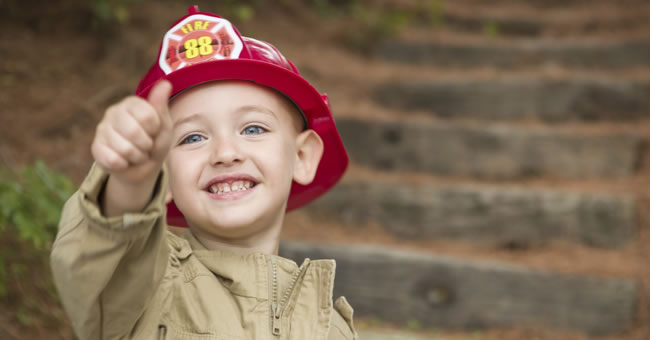
Did you know that children who are four years old or younger experience the most fire injuries or that the number of fire injuries is also high for children ages 10 to 14 (U.S. Fire Administration)? Children are especially at risk for fire injuries, but knowing what to do in the event of a fire is important at any age. Taking the time to talk about fire safety with your students may help prevent them from being injured or killed due to a fire. Here are a few things you should include in your lesson plans about fire safety:
Share Fire Information
According to the U.S. Fire Administration (USFA), it's important to share basic facts about the characteristics of fire. You should make it a point to tell children in age-appropriate ways that fire is fast, hot, dark, and deadly. Explain that children need to escape as soon as a fire starts and that the black smoke a fire produces may make them disoriented. You should also explain that a fire's heat, smoke, and toxic gases can be much more dangerous than the flames themselves. Knowing the characteristics of fire will ultimately help children identify its dangers while also discouraging them from playing with fire.
Explain What Happens When There's a Fire
Emphasize that children need to get out of the building when there's a fire and that they shouldn't stop to save their favorite toys, pictures, book bags, or other items. Whether they're at home, at school, or somewhere else, make sure children know to look for exits and that they know the fire safety plan for wherever the fire occurs. This is the perfect time to share the fire escape route for your classroom or center. Make sure children know where to meet you if they get lost during a fire drill or a real fire escape. You can also talk about what firefighters do to prevent and respond to fires. Read books about firefighters or invite firefighters from a local fire station to the school for a presentation on fire safety.
Encourage Family Engagement
Ask children and their families to make a fire escape plan for their home and/or check to make sure all of the smoke detectors in their home work as part of an assignment or family engagement activity. You can also come up with various school-to-home activities to celebrate Fire Prevention Week each year. Be sure to check the National Fire Protection Association's website to see which week in October is designated as Fire Prevention Week.
Remember, most fires start unexpectedly and spread quickly, so it's important to give children the fire-safety skills they need before a fire occurs. Preparing children for what they should do in the event of a fire may ultimately help save their lives. Be sure to browse our related products and the links below for materials and resources you can use to teach children about fire safety.
Article Resources
Fire Prevention Week – For Teachers (NFPA)
Basic Fire Escape Planning (NFPA)
Teaching Strategies (NFPA)
